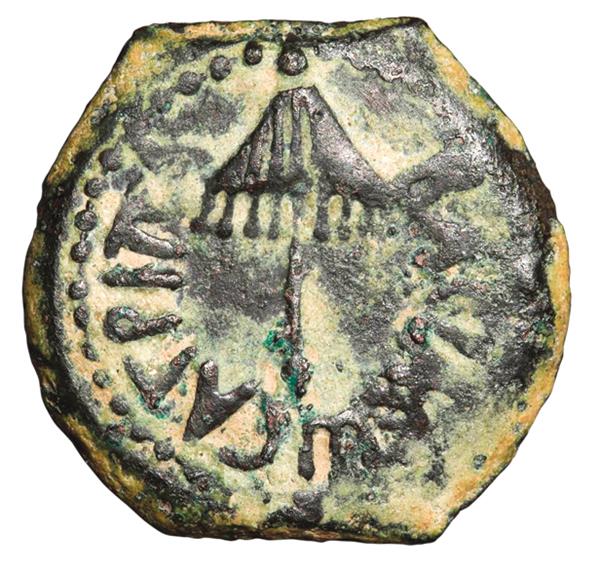Image Details

JOHN F. WILSON
THE VAST MAJORITY OF COINS discovered in the Jerusalem landfill date to the Early Roman period, with a couple of earlier coins from the Hasmonean Dynasty (165–63 B.C.E.). Since coins stay in circulation for decades, even these earlier coins don’t undermine an Early Roman date for the landfill. A bronze coin of Herod Agrippa I of Judea (r. 37–44 C.E.), like the one shown here, dates to the rule of the Roman Emperor Claudius (r. 41–54 C.E.). Its obverse side features an inscription that reads ΑΓΡΙΠΑ ΒΑCΙΛEWC (“of King Agrippa”) surrounding an umbrella-like canopy with fringes. The reverse side features three ears of barley growing between two leaves, flanked by the date Lς (“Year 6” of Agrippa I’s reign, which would be 41/42 C.E.). There are no coins from the First Jewish Revolt (66–70 C.E.) in the landfill and only one coin from the decade before the revolt.
